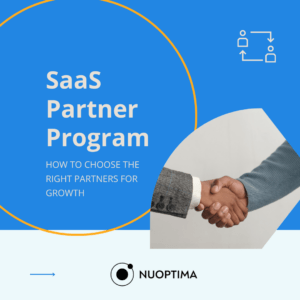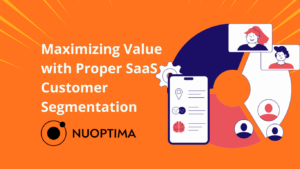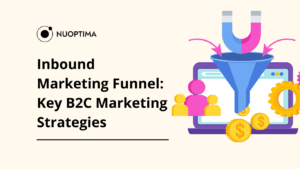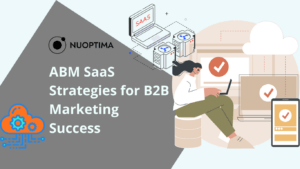In the digital age, the way businesses operate and interact with their customers has undergone a significant transformation. The subscription-based business model, once primarily associated with magazines and newspapers, has now permeated various industries, with Software as a Service (SaaS) leading the charge. The rise of B2B SaaS has reshaped the software landscape, making effective payment management more crucial than ever.
The model’s allure lies in its promise of predictable revenue, enhanced user engagement, and the ability to scale with ease. But with these opportunities come challenges, especially in the B2B sector, where the stakes are higher and the client relationships are more intricate. This guide delves deep into the world of B2B SaaS subscription management, exploring its evolution, significance, challenges, and the tools that businesses can leverage to navigate this complex terrain successfully.
The Evolution of Subscription Management
The journey of subscription management has been fascinating, marked by shifts in consumer behaviour, technological advancements, and changing business dynamics. Let’s chart this evolution step by step:
Timeline of Subscription Management Evolution
As we have depicted below, you can categorise these changes across several vital periods.
| Year Range | Key Developments |
| 1980s – 1990s | Magazines and Newspapers: The traditional model where consumers received periodic physical copies. |
| 2000s | Digital Content Platforms: With the rise of the internet, B2C platforms like Netflix began offering online content on a recurring basis. |
| 2010s | SaaS Boom: Software companies started offering their products as services, leading to the rise of SaaS subscriptions. |
| 2020s | B2B SaaS Domination: B2B companies adopted the model, leading to complex subscription management needs. |
To put it simply, you can sort these key milestones into the following themes:
- Shift From Physical to Digital: The early 2000s saw a change from physical subscriptions to digital ones. You can think of this period as the bridge era. On one side lay the charm of leafing through glossy magazines. On the other hand? The convenience of digital news, available anytime, anywhere. This wasn’t just a technological shift; it altered our consumption patterns.
- Rise of Consumer SaaS: Ever marvelled at how seamlessly you sync files with Dropbox? Or the ease with which Spotify introduces you to a new artist? This was the dawn of SaaS in the consumer world. Thus, companies like Dropbox and Spotify popularised the SaaS model among consumers, offering software as monthly or yearly plans.
- B2B SaaS Takes Center Stage: B2B businesses weren’t about to be left behind; the allure of SaaS was too strong. With no massive upfront costs, scalability, and the ability to integrate with other tools, it’s no wonder that solutions like Salesforce and Slack have become indispensable staples in the corporate world.
List of Key Factors Driving the Evolution
Let’s switch gears a bit. While we’ve painted a timeline of how the recurring payment model came about, you might be pondering, ‘What were the underlying currents that fuelled this journey?’ Good question! As with any transformative trend, multiple factors come into play. Here’s a deep dive into the prominent drivers that have turbocharged the rise of the model:
Technological Advancements
Remember the days of bulky software installation CDs? Well, thank your stars (and tech wizards) for the game-changing developments in the realm of cloud computing and high-speed broadband connectivity. These twin powerhouses made it feasible to whisk software over the web, bringing in unparalleled convenience: no more tedious installations or bothersome updates. Now everything’s on the cloud, ensuring you have the latest version without lifting a finger.
Changing Consumer Preferences
We’re living in the era of the ‘Netflix generation’. The modern consumer mantra? ‘Why buy when I can subscribe?’ This shift in mindset, favouring access over outright ownership, has been a linchpin in the rise of the subscription model. Whether it’s music, movies, or mission-critical software, today’s users crave flexibility and variety over permanence.
Economic Benefits
Here’s an open secret – businesses love predictability. And what’s more predictable than a steady, recurring revenue stream? These payment plans have become the holy grail for companies, offering financial stability and invaluable insights into consumer behaviour. Plus, the predictable nature of this revenue allows for better financial forecasting and informed decision-making.
Globalisation
The world isn’t just a global village; it’s a bustling, interconnected metropolis. As businesses started reaching out to international markets, their tools had to match pace. Enter flexible and scalable payment options tailored to address diverse regional needs while ensuring a cohesive brand experience. The requirement was no longer just for a one-size-fits-all product but a platform that could mould itself according to varied business landscapes.
Example: Salesforce’s Evolution
Let’s zoom in on Salesforce, shall we? Launched in 1999, it began its journey as a tool to manage customer relationships better. Recognising the changing tides, they expanded their toolkit, introduced various tiered plans, and tailored their offerings. From startups to multinational companies, there was a plan for everyone. This flexibility, dear reader, is a masterclass in B2B SaaS subscription management. It exemplifies how adapting to varying business needs isn’t just smart – it’s essential.
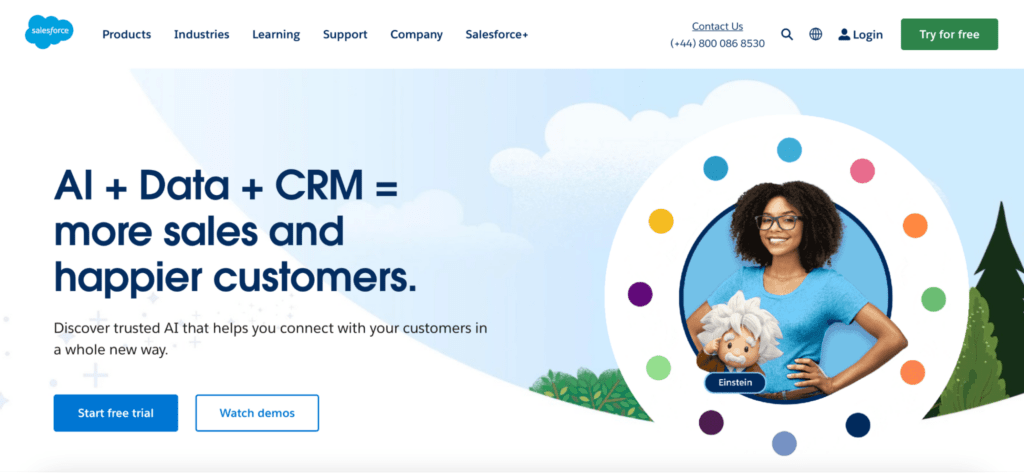
Why B2B SaaS Subscription Management Is Crucial
The B2B SaaS landscape is characterised by its dynamic nature, with businesses constantly evolving to meet the demands of their clientele. In such an environment, effective subscription control becomes the anchor for success. Here’s why:
Key Benefits of Effective Subscription Management
In the world of B2B SaaS, where client demands shift faster than British weather, having a strong foundation is essential. And what better cornerstone than a well-oiled subscription tracking system? Here’s what it brings to the table:
| Benefit | Description |
| Revenue Predictability | Accurate tracking of subscriptions allows for more reliable forecasting of monthly or annual recurring revenue (MRR/ARR). |
| Customer Retention | Automated renewal reminders and personalised offers can significantly improve customer retention rates. |
| Operational Efficiency | Automation of repetitive tasks, such as billing and invoicing, frees up staff to focus on more strategic activities. |
| Compliance and Security | A well-managed system ensures that all transactions are compliant with legal requirements and secure from fraud. |
| Customer Experience | A streamlined process makes it easy for customers to manage their accounts, renew services, and purchase add-ons. |
| Data-Driven Decision Making | Analytics from subscription data can inform pricing strategies, product development, and customer segmentation. |
| Flexibility | The system can quickly adapt to changing customer needs or business models, such as introducing tiered pricing plans. |
| Cost Reduction | Automation and efficiency gains can reduce operational costs. |
| Global Reach | Capabilities for multi-currency and tax calculations can help in scaling your business globally. |
List of Crucial Elements in B2B SaaS Subscription Management:
When improving your subscription administration, there are a few components to focus on, such as:
- Customer-Centric Approach: Every client is unique, with specific requirements and expectations. Recognising and fulfilling these needs is the cornerstone of successful payment management.
- Automated Processes: Efficiency and accuracy are non-negotiable. Automation ensures that from billing cycles to renewals, everything proceeds without a hitch, ensuring accuracy and timeliness.
- Data Analytics: By diving deep into trends, churn rates, and user behaviour, businesses can glean invaluable insights, shaping their strategies for success.
- Compliance and Security: Trust is fragile. Ensuring adherence to industry regulations and safeguarding client data is paramount in maintaining that trust.
- Integration Capabilities: In today’s interconnected business ecosystem, your admin tools should effortlessly mesh with other tools, be it CRM, accounting software, or payment gateways.
Effective maintenance is not just about ensuring consistent revenue; it’s about building and nurturing long-term relationships with business clients. As the B2B SaaS industry grows, companies prioritising efficient running of payments will undoubtedly have a competitive edge.
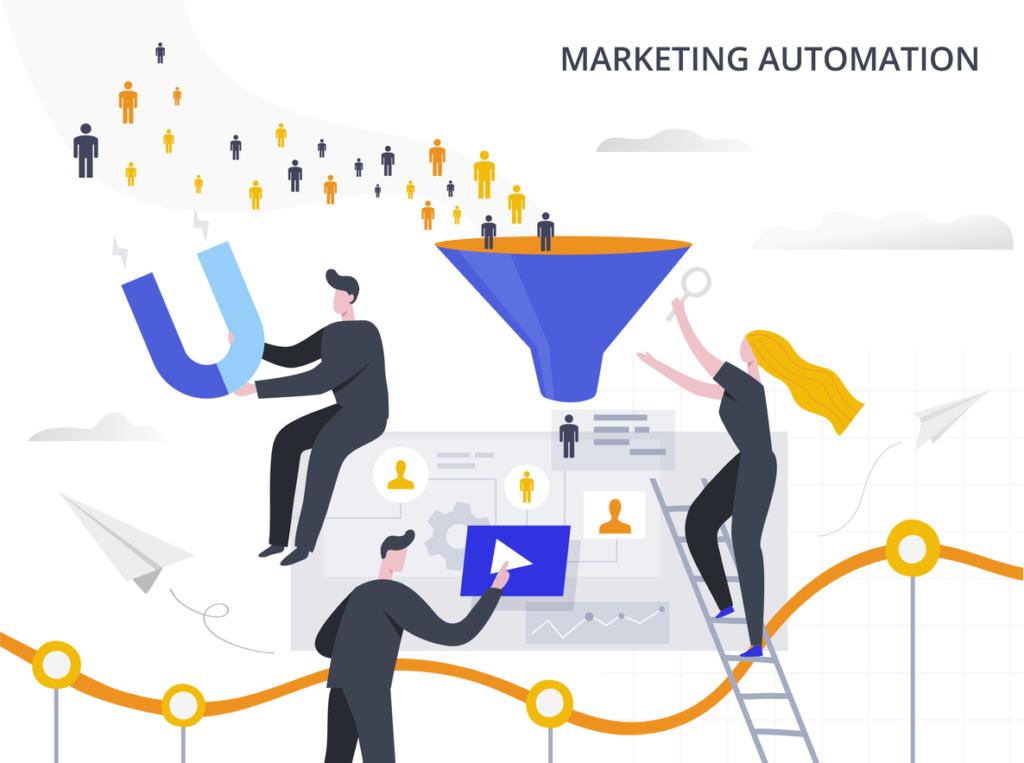
Challenges in B2B Subscription Management
While the recurring payment model offers numerous benefits, it’s not without challenges, especially in the B2B sector. Let’s explore the hurdles businesses often face and the implications of these challenges.
Common Challenges and Their Implications
Picture this: You’ve embarked on your B2B SaaS subscription journey, map in hand, ready to explore the potential treasures. But as you start, you realise there are intricate mazes to navigate. Here are the most common challenges you might encounter and their implications, sketched out for you:
| Challenge | Implication |
| Complex Pricing Models | Difficulty in billing accurately, leading to potential revenue loss. |
| Managing Recurring Billing | Increased chances of errors, delayed payments, and customer dissatisfaction. |
| Handling Renewals | Missed renewals can lead to revenue leakage and churn. |
| Addressing Customer Queries | Without a streamlined process, resolving billing queries can be time-consuming. |
| Integrating With Other Tools | Lack of seamless integration can lead to data silos and operational inefficiencies. |
Factors Exacerbating These Challenges
Managing a B2B SaaS company is no easy feat, so it’s important to be vigilant about possible hurdles and friction points. Let’s explore some additional factors that might disrupt operations.
Rapidly Changing Technology Landscape
It’s like trying to catch a speeding train; technology waits for no one. Here are some things to think about as you approach new tech:
- Continuous Evolution: Tech, especially in the B2B SaaS domain, is in perpetual motion. With every passing week, there might be a new software update, a breakthrough innovation, or an emerging trend. Ensuring your system isn’t left behind is vital; however, this requires you to be agile, adaptive, and thoughtful about which tools you choose to employ.
- Integration Hurdles: As newer innovations come into play, integrating them with existing processes without causing disruptions becomes a challenge.
- Training and Adaptation: Every shift often necessitates team training. Ensuring your team is always up-to-date and can harness the power of new technologies is both essential and challenging.
- Budgeting Constraints: Keeping up with the latest gadgets isn’t just a matter of adaptability; it’s also a matter of investment. Forecasting and allocating budgets for unforeseen advances can be tricky.
Diverse Client Needs
Every client is a different chapter in the B2B story. So, what do you need to consider?
- Customisation Demands: No two businesses are identical. Each demands a unique narrative, tailored solutions and distinct approaches. Catering to a diverse clientele means customising your offering to meet their specific expectations, which can strain resources.
- Feedback Overload: With diversity comes a plethora of feedback. Prioritising and acting upon such varied feedback while ensuring every client feels valued can be a balancing act.
Competitive Market
You’re faced with the constant need to innovate and offer value-added services to retain clients, so what matters most when you’re competing in these dense markets?
- Staying Ahead: In a saturated sector, the differentiating factor often isn’t just the product but the added value. Ensuring you consistently offer more value than competitors is a challenge.
- Rapid Response to Market Changes: In a competitive environment, delays can be costly. How swiftly you react to industry changes can make or break your position.
- Client Retention: With numerous alternatives available, retaining clients requires more than just a stellar product. It demands exceptional customer service, consistent value addition, and proactive engagement.
Recognising these exacerbating factors isn’t merely about understanding the pitfalls in B2B SaaS subscription management. It’s about strategically predicting and navigating them, ensuring that each challenge metamorphoses into an opportunity for growth and consolidation.
Discover effective market research techniques by tuning into the Nuoptima SaaS Podcast featuring Jordan Shlosberg from proSapient (Bergsearch).
Key Features of Effective B2B SaaS Subscription Management Software
The B2B SaaS arena is intricate, and with growing competition, it becomes imperative to have the right tools in your arsenal. But how does one choose the most effective payment software? It all boils down to features. Ensuring access to the most valuable features can directly influence efficiency, customer satisfaction, and profitability.
While every business has unique requirements, certain elements are universally beneficial. Here’s a breakdown of these indispensable components and the advantages they offer.
| Feature | Benefit |
| Flexible Pricing Models | Allows businesses to cater to diverse client needs, from flat-fee to tiered pricing. |
| Automated Billing | Ensures timely and accurate invoicing, reducing manual errors and enhancing cash flow. |
| Dunning Management | Helps in recovering failed payments, reducing revenue leakage. |
| Secure Checkout and Portal | Provides a seamless and secure experience, boosting trust and loyalty. |
| Analytics and Reporting | Offers insights into trends, helping businesses make informed decisions. |
| Integration Capabilities | Ensures the software works seamlessly with other business tools, enhancing operational efficiency. |
| Trial Management Suite | Optimises trial strategies, increasing conversion rates from trial users to paying customers. |
| Global Operations | Facilitates administration across different regions, currencies, and regulations. |
Example of How Analytics Can Inform the B2B SaaS Subscription Model
Let’s take a hypothetical example of Company Z, operating in the B2B SaaS spectrum. They realised the power of analytics in a transformational way. By tapping into the analytics module of their software, they uncovered a trend: a surge in customer churn during the third subscription month. This revelation was a game-changer. Armed with this insight, they rolled out a loyalty incentive for those transitioning into the fourth month, effectively stemming the tide of departures.
| Metrics to Follow | Description |
| Monthly Recurring Revenue (MRR) | The amount of revenue that you can reliably anticipate every month. |
| Customer Lifetime Value (CLV) | The average revenue you can expect from a customer throughout their subscription with your service. |
| Churn Rate | The percentage of customers who cancel or downgrade their subscription in a given period. |
| Average Revenue Per Customer (ARPC) | The average revenue received from a customer each month. |
| Customer Acquisition Cost (CAC) | The average cost to acquire a new customer, including marketing and sales expenses. |
| Lifetime Value to Customer Acquisition Cost Ratio (LTV:CAC) | Evaluates the ROI of your customer acquisition efforts. |
| Expansion MRR | Additional revenue from existing customers through upsells, cross-sells, or upgrades in a given month. |
| Contraction MRR | Lost revenue from existing customers due to downgrades or reductions in a given month. |
| Net MRR Growth Rate | The percentage growth in MRR, considering new sales, expansions, contractions, and churn. |
| Average Subscription Length | Average number of months a customer remains subscribed before churning. |
Advanced Features for Growing Businesses
As B2B SaaS businesses evolve and scale, their needs become more complex. It’s not just about managing recurring payments anymore; it’s about optimising every part of the buyer journey. For businesses eyeing the next level of growth, here are advanced features that can make a significant difference:
Customer Segmentation
Segmenting users to deliver personalised experiences ensures each client feels valued and understood. You can do this by categorising them based on usage, payment tier, or other criteria to offer tailored services. However, beyond the basic categorisation of clients, advanced segmentation can involve machine learning and predictive analytics. By understanding behavioural patterns, subscription usage, and feedback loops, businesses can create hyper-personalised marketing campaigns, product enhancements, or customer support initiatives.
In short, delivering bespoke encounters that resonate with specific user groups ensures higher engagement, retention, and, ultimately, increased lifetime value.
Promotions and Discounts
This isn’t just about slashing prices. Advanced tools allow businesses to set up targeted promotions based on user behaviour, account duration, or feedback. Moreover, they can integrate gamification elements or loyalty programmes to further entice users. With these strategic promotions, you’ll be able to attract new customers and re-engage dormant ones, driving both acquisition and loyalty.
Self-Service Customer Portal
Encourage customers with a portal where they can independently manage their account, view billing history, and raise queries, giving them a sense of control and satisfaction.
A self-service portal can incorporate features like AI-driven chatbots for instant query resolution, predictive FAQs, or even virtual workshops and webinars. These platforms can evolve into knowledge hubs, offering clients resources, insights, and tools to maximise software value. By empowering clients to self-help and self-educate, businesses can foster a more engaged user base, reduce support overheads, and position themselves as industry thought leaders.
Automated Communication
Stay connected with clients through automated communications, ensuring they’re always in the loop. However, this stretches far beyond sending renewal reminders. Imagine if your system could predict potential churn and trigger personalised retention campaigns or congratulate a client on a business milestone and suggest relevant account upgrades. Integrating behavioural triggers with communication automation can significantly enhance touchpoints. With these additions, you can keep clients engaged and informed in a personalised manner, further strengthening relationships and reinforcing brand value.
Customisable Workflows
Every B2B SaaS enterprise is unique, with its own set of processes, buyer journeys, and operational nuances. Advanced subscription software should allow businesses to mould workflows – from onboarding to renewal – that mirror their ethos and operational strategy.
You might find that tailored workflows can reduce friction, enhance user experience, and ensure that the payment process is in perfect harmony with broader business goals. Therefore, designing your subscription process with business operations and SaaS customer journey in mind can help align your brand and client expectations.
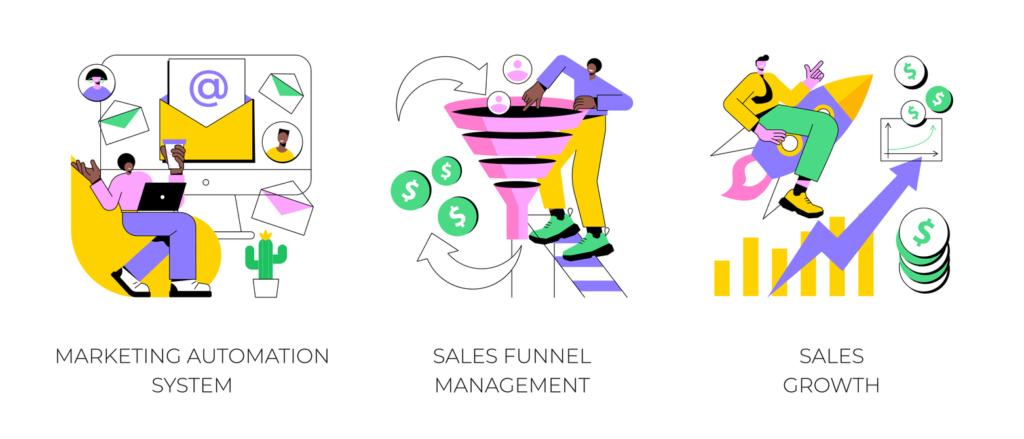
Leading B2B SaaS Subscription Management Platforms
The market is flooded with platforms[1], each promising to be the best. The top ones excel not just in features but also in responding to a business’s unique requirements. Let’s dive into some market leaders and the criteria companies should consider when selecting the right platform.
| Platform | Unique Selling Point | Key Features |
| Stripe | Comprehensive payment solutions | Flexible billing, global payments, financial reporting |
| Pabbly | No extra charges for all its features | Unlimited plans & billing, dunning management, tax management |
| Chargebee | Scalability and flexibility | Multi-currency support, trial management, automated billing |
| FastSpring | Full-service e-commerce for SaaS | Global payments, branded checkout, risk management |
| Paddle | Seller-centric platform | Unified dashboard, SaaS metrics, churn prevention |
| Maxio (previously Chargify and SaaSOPTICS) | Financial operations in one place to simplify complex billing | Self-service billing portals, usage-based billing, CRM integrations, invoicing, analytics and reporting |
| SaaSOptics | Built for B2B SaaS companies, focuses on financial operations and metrics | Subscription billing, financial reporting, revenue recognition, dunning and collections, customer insights, metrics and analytics |
| BareMetrics | Real-time SaaS analytics directly from your payment gateway | Real-time metrics dashboard, churn analysis, email reports, forecasting, trial insights, retention analysis |
| ProfitWell | Accurate subscription financial metrics with actionable insights | Revenue reporting, retention and churn analytics, pricing strategy and optimisation, benchmarking, engagement metrics, growth insights |
Criteria for Choosing the Right Platform
When evaluating administration platforms, businesses must consider multiple facets. While it’s tempting to opt for the most feature-rich or popular platform, weighing options against specific criteria that match your business needs is crucial.
- Business Size and Needs: Does the platform cater to startups, SMEs, or large enterprises? Can it handle the business’s current and future needs? From solopreneurs and startups to massive enterprises, ensure the chosen platform can scale with growth without causing disruptions. It should be forward-thinking, accommodating projected expansions, customer bases, or product diversifications.
- Integration Capabilities: How well does it integrate with other tools the business uses? Seamless connectivity is critical to ensure companies have a unified ecosystem, reducing data silos and streamlining operations.
- Customer Service: Is support available 24/7? What do existing users say about the platform’s support? Consider looking for platforms with robust customer service, both in terms of availability and quality. Delve into user reviews, focusing on how the platform handles issue resolutions, responsiveness, and ability to offer effective solutions.
- Pricing: Is the pricing model transparent? Are there hidden costs? Beyond just the upfront fees, it’s crucial to understand the pricing model’s intricacies. Does the platform charge based on the number of subscribers, transactions, or features? Are there set-up fees, transaction fees, or costs associated with integrations? A transparent pricing model can help businesses budget effectively.
- Security and Compliance: Does the platform adhere to industry regulations? How does it ensure data security? With increasing concerns about breaches and privacy, it’s also essential to check whether the platform correlates with global data protection standards. Does it offer end-to-end encryption? What are its backup protocols? Being GDPR compliant or adhering to other regional protection standards can be a significant advantage.
- Customisation and Flexibility: Businesses evolve, and so do their needs. Can the platform be customised to suit specific workflows or customer journeys? Does it allow businesses to create bespoke features or interfaces that mirror their brand ethos?
- Analytics and Insights: Handling subscriptions isn’t just about tracking transactions. Understanding subscriber behaviours, spotting trends, and predicting churn can be invaluable. Platforms that offer rich analytics and actionable insights can help businesses strategise more effectively.
- Training and Onboarding: Implementing a new platform can pose challenges. Does the service provider offer comprehensive training for teams? Are there resources, tutorials, or webinars available to ensure a smooth transition?
While these platforms are among the best in the industry, it’s essential for businesses to conduct thorough research and choose one that aids their needs and goals.
Best Practices for B2B Subscription Management
To truly harness the potential of this sustainable model in the B2B SaaS landscape, businesses must adopt specific best practices. These practices make way for smooth operations and enhance user satisfaction and loyalty.
| Best Practice | Benefit |
| Transparent Pricing | Always be upfront about all costs to build trust with users and reduce billing disputes. |
| Offer Trials | Allow potential subscribers to try your service before committing, increasing conversion rates. |
| Regular Communication | Keeps customers informed about renewals, updates, and offers. You can also use feedback surveys, webinars, and newsletters to keep them engaged. |
| Data-Driven Decision Making | Uses analytics to make informed decisions about pricing, offers, and more. |
| Regular System Audits | Ensures the system is up-to-date and free from errors. An audit can also reveal opportunities for new features and security measures. |
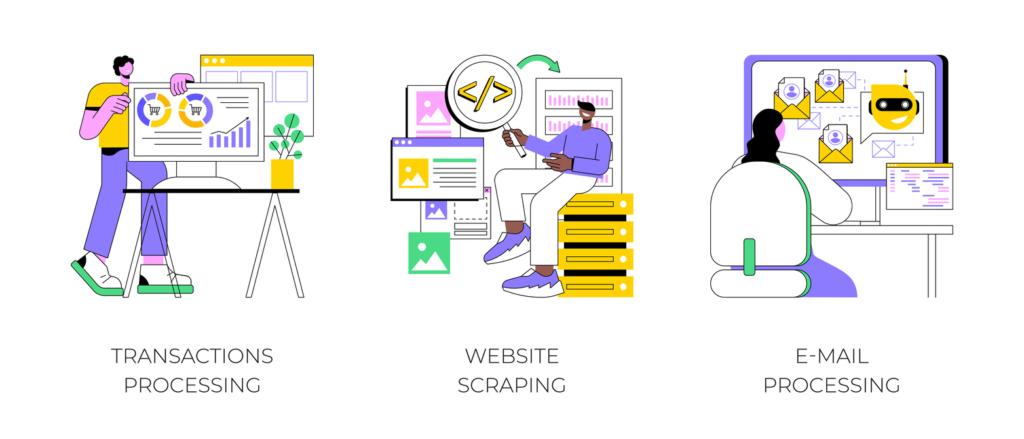
The Future of B2B SaaS Subscription Management
The B2B SaaS industry is ever-evolving, driven by technological advancements, changing business dynamics, and shifting customer preferences. As we look ahead, what does the future hold for subscription management in this sector? Below, we explore some predicted trends and their possible impact.
| Predicted Trend | Impact |
| AI-Powered Analytics | Enhanced insights into user behaviour, leading to personalised payment offerings |
| Blockchain in Billing | Secure and transparent billing processes, reducing disputes and enhancing trust, meeting the need for compliance |
| IoT Integration | Real-time usage tracking, leading to dynamic pricing models based on actual usage |
| Global Subscription Models | Catering to a global clientele with localised pricing, language, and support |
Final Thoughts
In conclusion, B2B SaaS subscription management is not just about automating billing or tracking renewals. It’s about creating a holistic ecosystem where businesses and customers come together in a mutually beneficial relationship. By adopting best practices, leveraging the right tools, and always putting the user first, companies can not only thrive but also set new benchmarks in the SaaS industry.
Yet, in this intricate dance of growth and innovation, businesses need not tread the path alone. At NUOPTIMA, we understand the nuances of the B2B SaaS space intimately. Our expertise, honed over years of experience, is tailored to guide firms towards streamlined processes and monumental scaling. We genuinely believe that with the right partner by your side, the journey becomes more accessible and transformative. So, if the thought of elevating your subscription management strategy resonates with you, we welcome a conversation. Book a free call with the seasoned experts at NUOPTIMA, and let’s co-author your next chapter of unparalleled growth.
FAQ
B2B SaaS subscription management refers to overseeing and automating the payment lifecycle for businesses in the Software as a Service (SaaS) industry. This includes billing, renewals, subscriber support, and analytics.
Managing payments properly will streamline operations, ensure accurate billing, reduce churn, and enhance customer satisfaction. It’s crucial for recurring revenue, retention, and business growth.
Consider factors like your business size, integration needs, subscriber support, pricing transparency, and security features. It’s also beneficial to opt for platforms that offer scalability and flexibility to adapt to changing business needs.
AI enhances your set-up by offering predictive analytics, automating interactions, personalising payment offerings, and optimising pricing models based on user behaviour.
Common challenges include managing complex pricing models, handling recurring billing, addressing queries promptly, and integrating systems with other business tools.
Yes, many platforms support global operations by offering multi-currency billing, adhering to regional regulations, and providing localised customer service.
Effective strategies include flexible subscription plans, transparent billing, automated renewal reminders, and prompt customer support. Regularly analysing churn metrics and seeking feedback can also provide insights for improvement.
